Britain has a long-standing history of aviation. Flying and aircraft production go back to the earliest days of the industry, and with so many aviation fans here, there’s a strong community involved in aircraft preservation.
All across the UK there are excellent, interesting aviation museums and collections.
For the airliner fan there are some great, historic types to see. If you are visiting the London area, you might want to make a visit to see the following preserved airliners:
Concorde at Brooklands
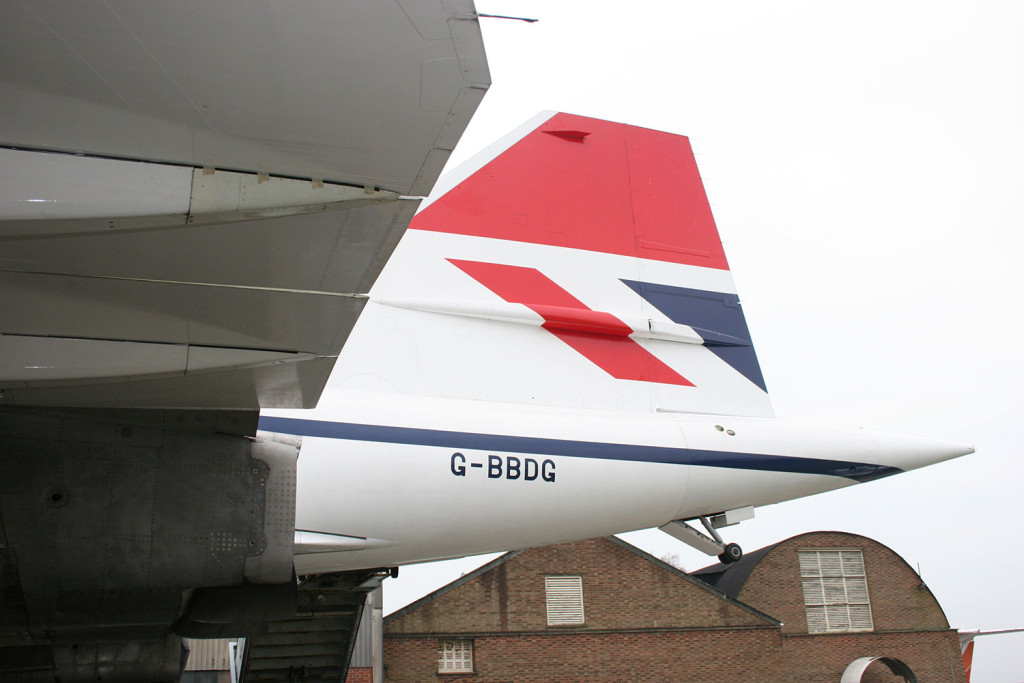
G-BBDG at Brooklands wearing the 1970s British Airways livery.
Brooklands Museum is situated in Weybridge, amongst the important historic motor racing circuit. The site was used for aircraft production for many years, particularly with Vickers.
Among the collection of airliners are three in particular that we think you should visit.
This Concorde, with registration G-BBDG, was one of the prototypes used before the supersonic airliner was certified. It was actually the first to carry passengers, albeit on a test flight.
After years in storage at Filton, it was eventually moved to Brooklands and reassembled. It is the only Concorde wearing the old Negus livery of British Airways.
VC-10 at Brooklands
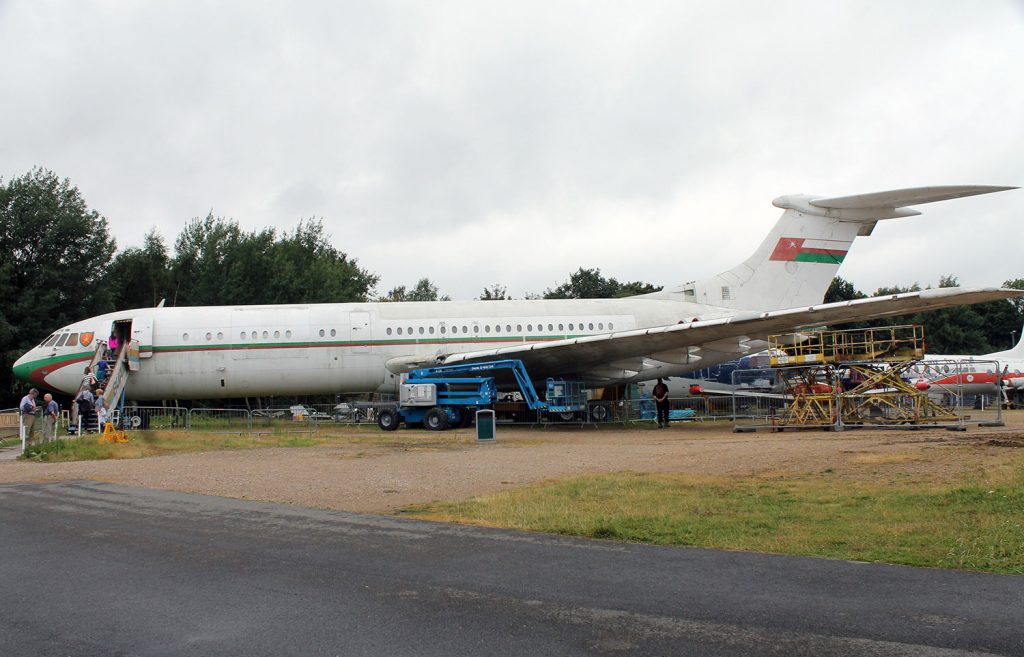
Also at Brooklands is this Vickers VC-10 formerly flown by the Sultan of Oman, with registration A4O-AB. It was actually flown into the short runway here when it still existed.
Before it became a private aircraft, it flew with British United Airways and British Caledonian Airways.
There is also the fuselage of a former British Airways Super VC-10 to see at Brooklands.
Vanguard at Brooklands
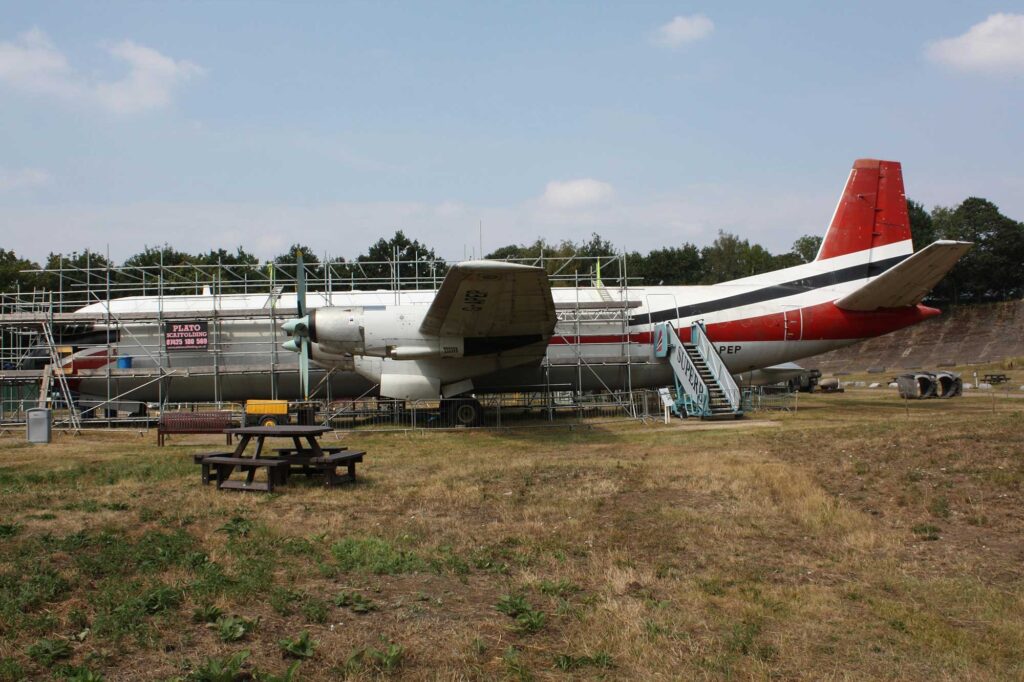
Another airliner to see at Brooklands is the Vickers Vanguard 953C (latterly called a Merchantman when converted to a freighter) which was flown by Hunting Cargo. It is G-APEP, and started life with British European Airways (BEA) in 1961. It was built at Brooklands, and landed back here on the short runway in 1996.
de Havilland Heron at Croydon
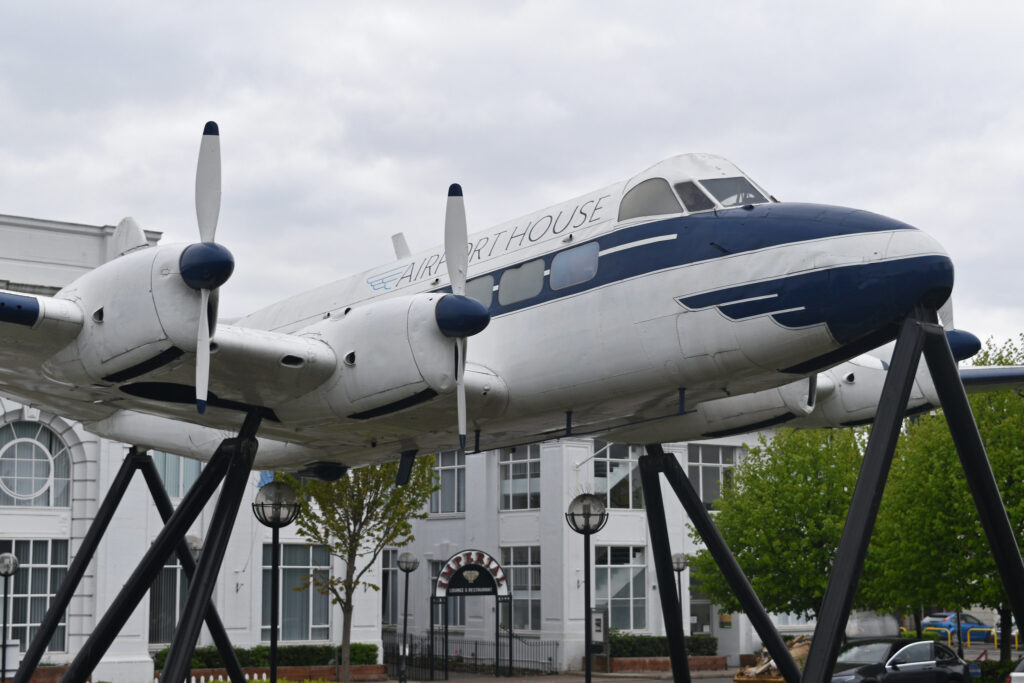
Photo (c) Alan Wilson
Croydon was once the main airport serving London. It is situated to the south of the city, nearer today’s Gatwick Airport, and was once a hub of early airliner types using its grass, and later concrete, runways.
The airport closed in 1959 when rivals at places like Northolt and Heathrow took over. Today, the original Art Deco terminal building survives as a small museum, and perched on its roof outside is a de Havilland Heron, G-AOXL, representing one of the later types to frequent the airport.
Short Sunderland at Hendon
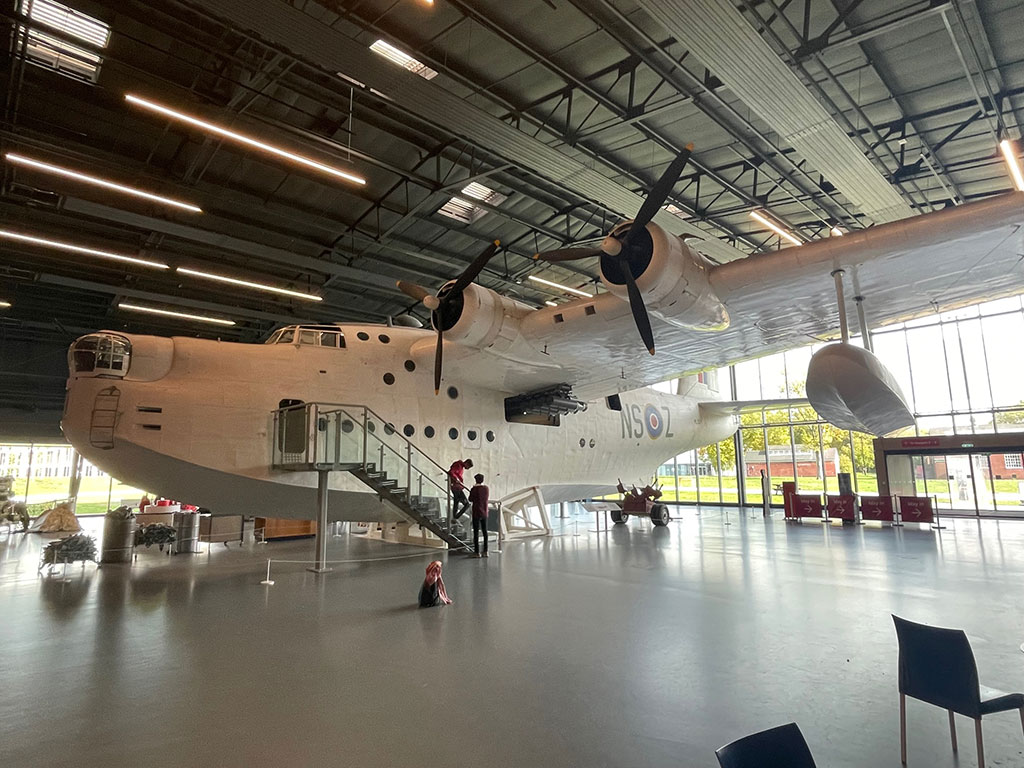
The RAF Museum located in Hendon is an amazing place to visit (see our trip report here). It is full of important historic military aircraft which have served Britain, and early types build on the site.
The only aircraft that could be termed an airliner here is Short Sunderland SR5 ML824.
Whilst this aircraft never flew commercially, other Sunderlands and similar flying boats did. It’s fascinating to wander around inside.
Hawker Siddeley Trident at London Colney
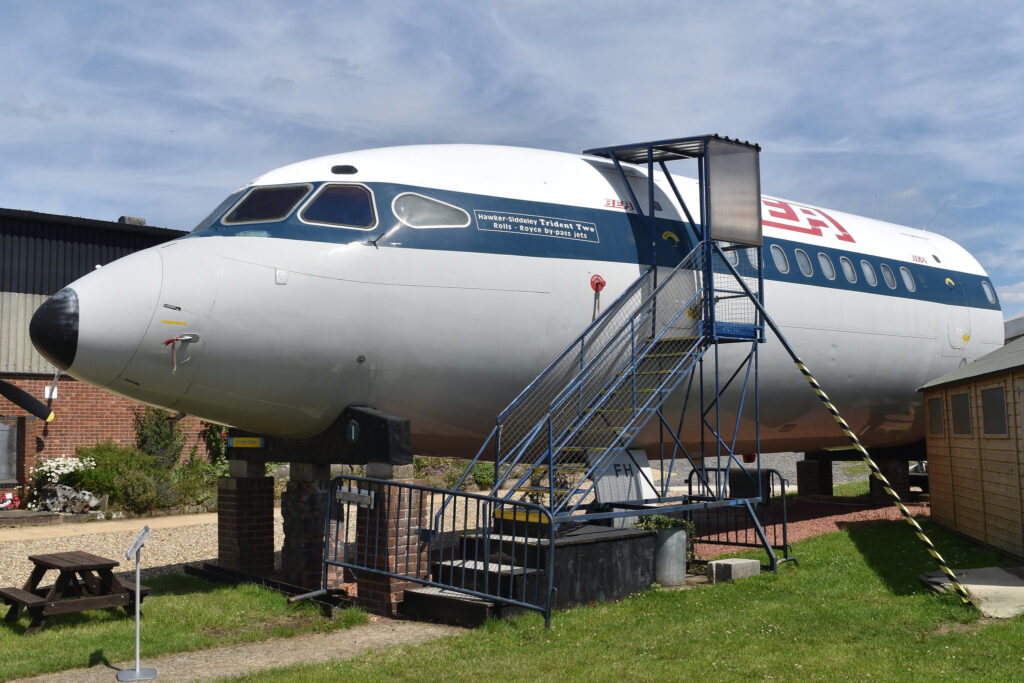
The de Havilland Museum at London Colney is a treasure trove of aircraft relating to de Havilland – arguably the greatest aircraft manufacturer to have come from Britain.
Displaying examples of light, military and civil aircraft, of interest is the forward fuselage of Hawker Siddeley (designed by de Havilland) Trident 2E G-AVFH.
This aircraft started life with BEA and later flew for British Airways. It was one of the most advanced airliners at the time, although shadowed in sales by the similar Boeing 727.
Comet 1 at London Colney
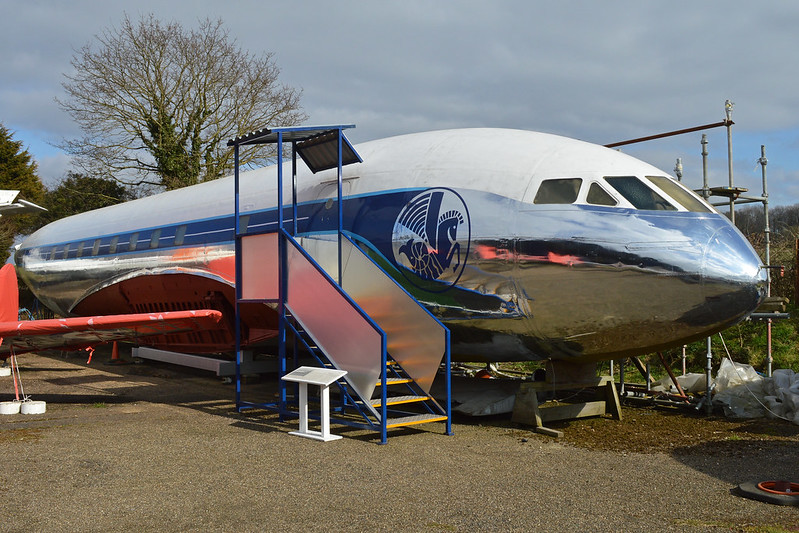
Photo (c) Alan Wilson
Also at Colney is the fuselage of de Havilland Comet 1A F-BGNX, in the colours of Air France.
This is very rare, as one of only two Comet 1s on display in the world. It has been lovingly restored inside.
You’ll also see a Comet 4 cockpit at the museum.
BAe 146 at Colney
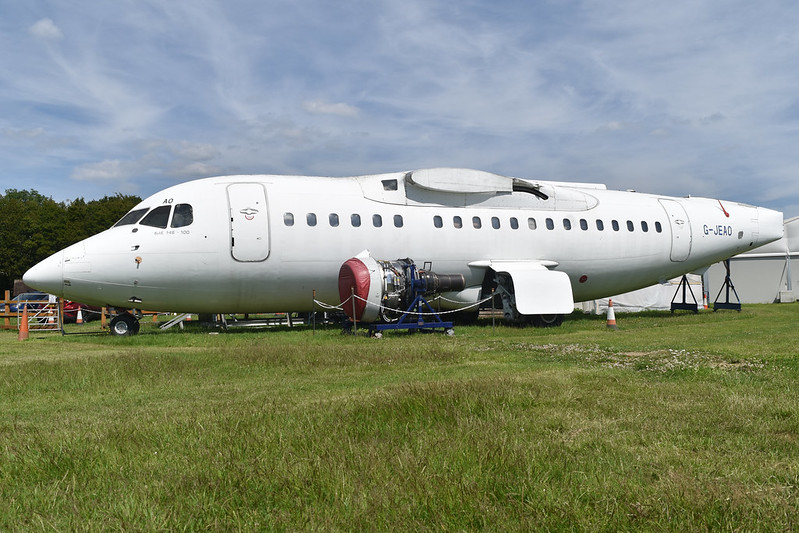
Photo (c) Alan Wilson
British Aerospace 146-100 G-JEAO is being preserved at the de Havilland Musuem, too.
This type was the last to be built at nearby Hatfield before the airfield closed and production moved to other British Aerospace sites.
Boeing 747 section at the Science Museum
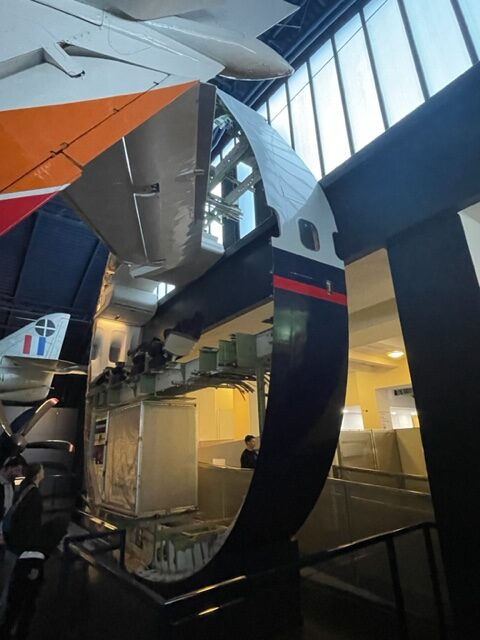
Inside the Science Museum in Kensington, central London, is a cross-section of a Boeing 747SR-46, previously flown by Japan Airlines (although today painted with the old British Airways livery).
Whilst the purists might not consider this a large enough example to considered an aircraft worth logging, it is nevertheless amazing to see the size and structure of a Jumbo Jet up close.
Airport Spotting Guides UK & Ireland
Our newly updated guide to plane spotting in the UK & Ireland covers all the best airports, airfields and aviation museums to visit across these countries. It tells you where to go spotting, what you’ll see and how to get there.
Order Your Copy Today!


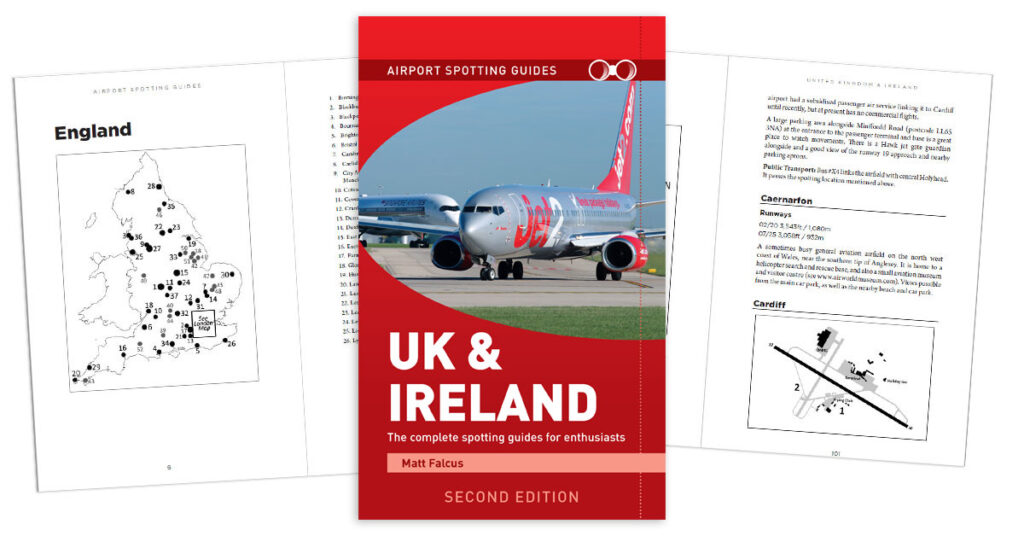



2 comments
We have a complete Concorde at Manchester (inside) alsoit has a drooping nose that works, outside a BEA Trident,alongside a Nimrod both are open to visit,and on the other side of the viewing park is a 146 also open for visiters, also the front end on a Monark DC10 but not sure if it will take visits.
I got my PPL at Croydon in 1954. There was never a hard runway there. Just a short tarmac acceleration strip south of the hangers near Purley Way. The DH Heron is not roof mounted but is on pylons just outside terminal building.